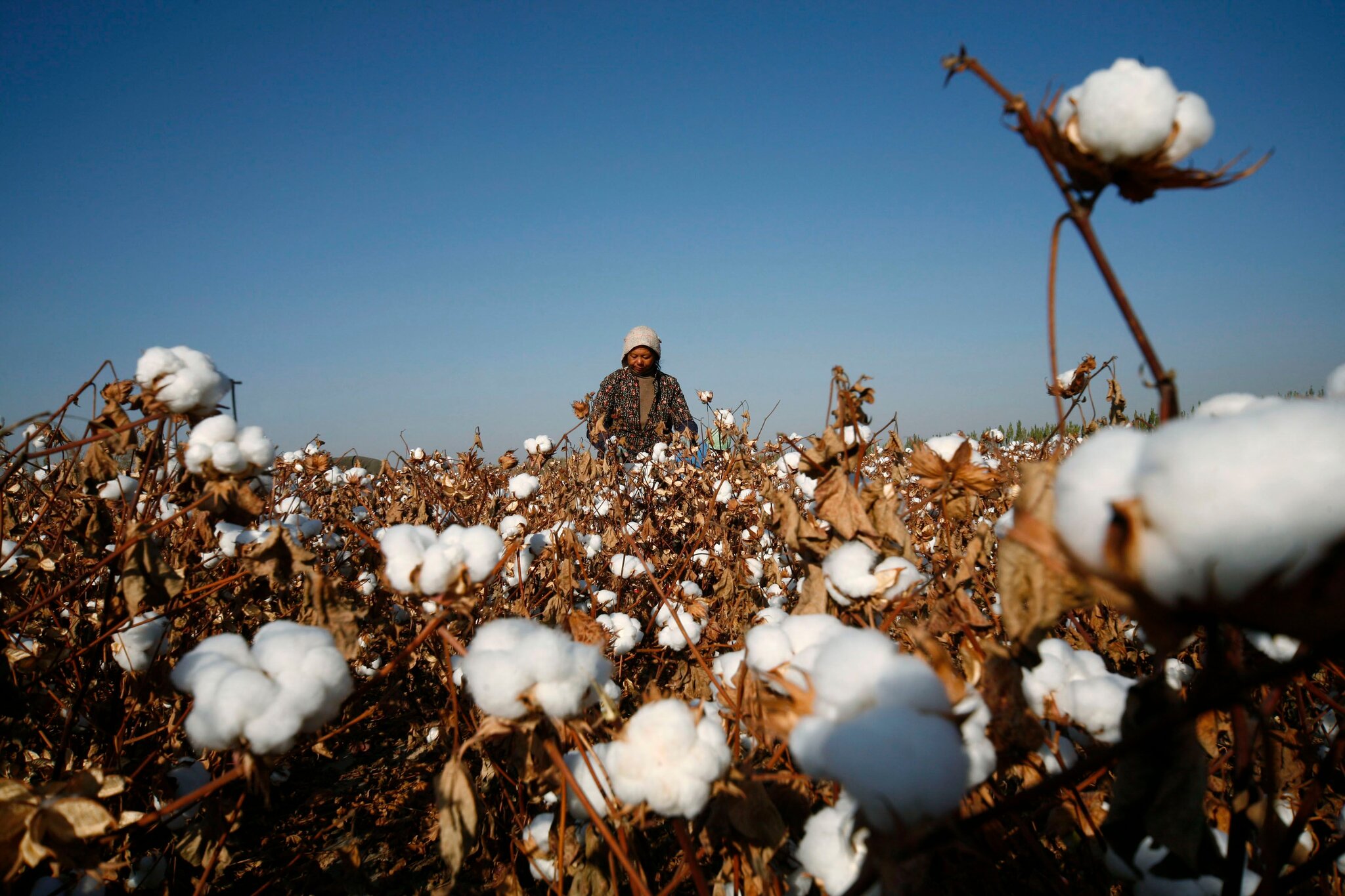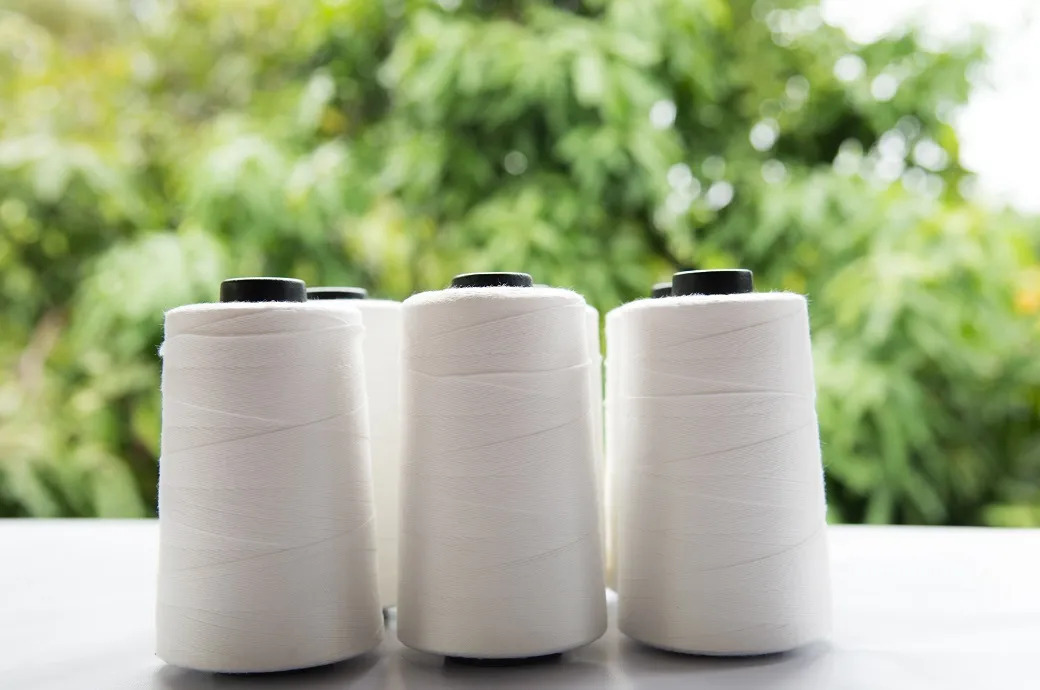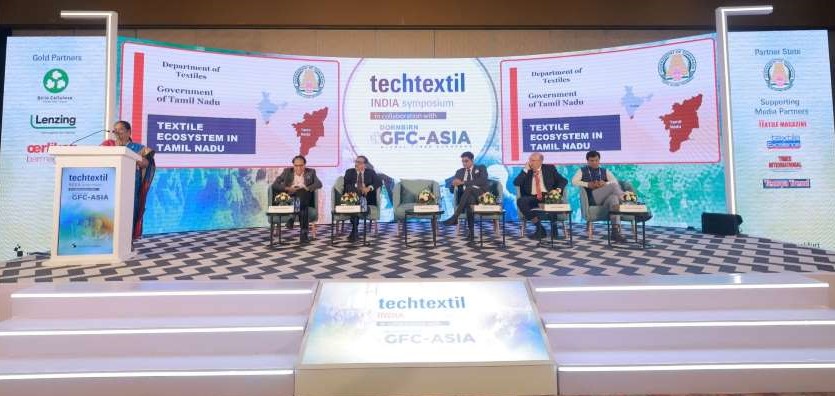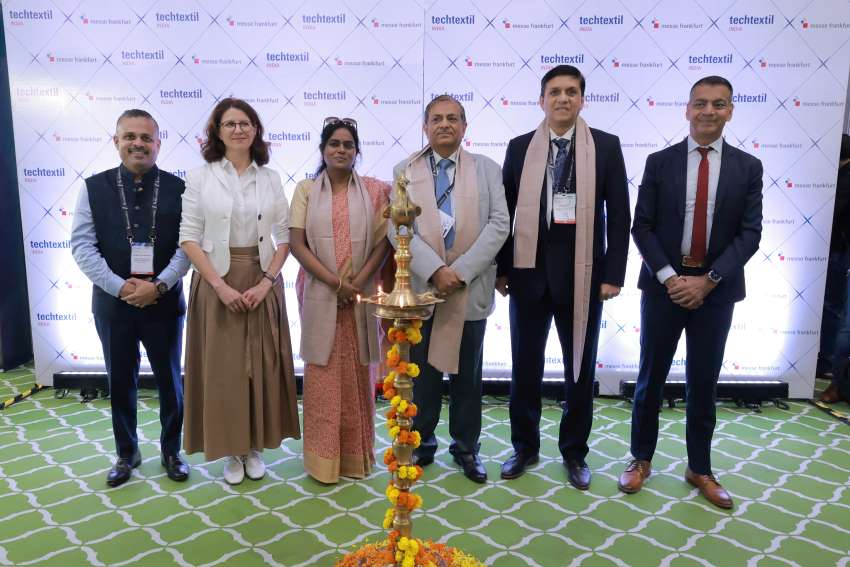FW
Criticizing global buyers and brands, leaders of the Bangladesh Garment Manufacturers and Exporters Association (BGMEA) alleged they fail to raise product prices despite significant wage hikes and expensive new initiatives to improve workplace safety and compliance.
At a press conference held in the association’s headquarters, Md Atiqul Islam, President, BGMEA noted, while global buyers push for higher wages, they refuse to increase prices and are even canceling orders from factories located in shared or rented buildings.
The press briefing was held to announce steps taken to commemorate the first anniversary of the tragic Rana Plaza building collapse, which killed at least 1,135 garment workers. The BGMEA highlighted ongoing industry developments, including the registration of 150 trade unions over the past year, compared to just 38 in the previous eight years.
Islam urgently requested global brands to create a dedicated fund for the Rana Plaza victims and their families, moving beyond verbal assurances. He also called for the speedy disbursement oft/he existing ILO $40 million trust fund.
Islam labeled the buyers' practice of pulling orders from factories in shared buildings as ‘inhuman,’ pointing out that approximately 40 per cent of factories are located in shared or rented buildings, employing about 1.5 million workers.
He pleaded with buyers to reconsider withdrawing orders, assuring them apparel makers are committed to preventing another tragedy. Out of 700 factories assessed under the Accord, the Alliance, and the government-led initiatives, only 13 factories across four buildings had production suspended due to structural faults, demonstrating that not all shared buildings are unsafe.
Along with other textile groups, BGMEA plans to organize a series of events on April 24, including a rally and prayer programs for the deceased workers.
Garment exports from Tamil Nadu have reportedly plunged by around 8 per cent, driven primarily by the imposition of steep tariffs by the United States on Indian goods, specifically targeting the textile and apparel sector.
The US imposed a massive 50 per cent tariff on Indian exports, which makes garments significantly more expensive for American buyers compared to competitors. This tariff was initially a smaller ‘reciprocal’ duty which was later increased as a ‘penalty’ duty.
The tariff places Indian exporters at a significant disadvantage, as competitors like Bangladesh, Vietnam, and Indonesia face much lower US tariffs. This 30-point gap makes Indian products less viable in the US market.
Tamil Nadu is a powerhouse for India's textile sector, contributing about 28 per cent of the country's total textile exports. Known as India's ‘knitwear capital,’ Tiruppur sends a large portion of its garments to the US.
Exporters in hubs like Tiruppur are reporting drastic reductions and cancellations of US orders, with some claiming up to 80 per cent of US business has stalled.
US buyers are demanding steep discounts from Indian suppliers to offset the tariff cost, forcing exporters to operate at a loss just to maintain relationships or get paid for existing stock.
Factories are cutting work hours, reducing production shifts, and laying off workers, particularly contract and migrant laborers. The state government has warned that up to 30 lakh (3 million) jobs across the textile belt are at immediate risk.
There are reports of significant inventory buildup and rising working capital requirements as orders are on hold.
The Tamil Nadu government estimated that the state could lose up to $3.93 billion in export value across all affected sectors, with the textile sector alone potentially losing $1.62 billion.
The crisis is especially impacting women, who make up a large portion of the workforce in garment hubs like Tiruppur.
In essence, the 8 per cent plunge reflects the initial, severe impact of the 50 per cent US tariff, which has made Tamil Nadu's garments uncompetitive and led to a cascade of canceled orders and production halts.
The Prada Group reported strong financial performance for the first nine months of 2025, with net revenue rising by 9 per cent at constant exchange rates to €4 billion. This marks the company's 19th consecutive quarter of uninterrupted growth.
The stellar results were primarily driven by the retail channel across all regions, which saw sales growing by 9 per cent to €3.6 billion. This performance was backed by strong like-for-like growth and robust full-price sales.
Despite a challenging comparative base, the group continued to expand in Q3 2025 with overall revenue rising by 8 per cent and retail sales growing 7.6 per cent.
The group’s brands showed distinct trends. Miu Miu maintained its impressive four-year run, with revenue soaring by 41 per cent over the nine-month period and by 29 per cent in Q3, FY25. Prada's revenue accelerated in Q3 compared to the previous quarter, even though its retail sales declined slightly by 1.6 per cent for the nine months and 0.8 per cent in the third quarter.
Patrizio Bertelli, Chairman and Executive Director, stated, these consistent results confirm the strength of the group’s brands and the soundness of their strategy even in a complex macroeconomic climate. Their continued focus on creativity, outstanding products, and craftsmanship is the foundation for the group’s lasting relevance and sustainable growth.
Andrea Guerra, Chief Executive Officer, affirmed, the performance testifies to the integrity of the group’s brands and the diligent, robust execution of its teams. Despite the still challenging environment, the group remains confident in its growth trajectory, prioritizing investment in customer-exciting products and experiences, he added.
The Prada Group saw broad-based growth globally during the nine-month period. The Asia-Pacific region delivered double-digit growth of 10 per cent, with signs of market improvement in mainland China during the third quarter. The Middle East showed a robust growth of 21 per cent while Europe performed positively with 6 per cent growth supported by both local consumer spending and tourism.
The Americas posted a solid growth of 15 per cent and saw accelerated growth sequentially in the third quarter. Japan's revenue rose by 3 per cent after a 2024 marked by exceptional inbound tourist flows, with the third quarter showing improvement.
International association representing the nonwovens and related industries, EDANA views the European Commission's recent shift on the EU Deforestation Regulation (EUDR) as a missed chance to establish a clear, effective framework for combating global deforestation.
The recent announcement unnecessarily complicates matters where simplification was necessary. Instead of providing certainty, it's introducing confusion among businesses, disrupting already intricate supply chains, and potentially undermining Europe's competitiveness, opines EDANA.
The association’s members are committed to supporting global anti-deforestation efforts. However, supported by an IT system that remains inadequate, the Regulation in its current state presents fundamental challenges. These include unresolved issues regarding polygon geolocation and excessive due diligence requirements.
EDANA emphasizes, the European Commission should stick to its original proposal to the European Parliament and postpone implementation by 12 months. This would allow enough time to ensure the system is functional and fair for all businesses.
Frequent changes in direction damage business confidence and create uncertainty across global markets. These latest developments have already caused confusion on both sides of the Atlantic, with some nations pushing for a faster timeline while others are calling for a delay, states EDANA.

A new report highlights the global carbon fibre and yarn market growing and how. The report by Thryve Research projects the market will be worth $4.7 billion by 2033. The market, was at $2.5 billion in 2024, and is set to grow at a Compound Annual Growth Rate (CAGR) of 7.5 per cent from 2026 to 2033. This increase is largely due to a global push for lightweight, high-strength materials across critical sectors like aerospace, automotive, and wind energy. While Asia-Pacific leads this growth, a new narrative is emerging: India's ambitious stride to become a key player in the production and application of this material of the future.
The global growth picture
The global carbon fibre yarn market, currently at approximately $2.3 billion in 2025, is a testament to the material's versatility. Its applications range from enhancing the structural integrity of aircraft and automobiles to fortifying wind turbine blades and sporting goods. The market is segmented by application, with each sector driven by unique factors:
Aerospace: The primary driver is the demand for fuel efficiency and reduced emissions, making the high strength-to-weight ratio of carbon fibre indispensable for structural components.
Automotive: The shift towards Electric Vehicles (EVs) is a major catalyst. Carbon fibre-reinforced plastics (CFRP) help extend EV range by reducing vehicle weight, and are increasingly used in premium cars for body panels and crash structures.
Wind energy: As wind turbine blades grow longer to capture more energy, they require materials that are both strong and light to withstand immense forces. Carbon fibre is the ideal solution, improving durability and reducing overall weight.
Sporting goods: The market thrives on consumer interest in high-performance gear. Carbon fibre's lightness and strength are prized in products like tennis rackets, bicycle frames, and golf shafts.
Construction: The use of carbon fibre in seismic reinforcement and retrofitting aging bridges and buildings is a growing application, driven by the need for durable and corrosion-resistant materials.
Table: Global carbon fibre market and growth drivers
Region Market size ($ bn) Growth drivers Asia-Pacific 1.1 Robust manufacturing, industrialization, cost competitiveness Europe 0.6 Strong aerospace & wind energy industries, stringent regulations North America 0.5 Aerospace, defense, and premium automotive segments Latin America 0.07 Rising infrastructure investment, niche sporting goods demand Middle East & Africa 0.03 Emerging construction and energy sectors
Source: Thryve Research, Verified Market Reports)
India's changing market from importer to producer
Historically, India has been a net importer of carbon fibre, relying on countries like the US, France, Japan, and Germany for its supply. However, the tides are turning. In a significant policy shift, the Indian government has announced plans to achieve indigenous production of niche carbon fibre by 2025-26. This initiative is a cornerstone of the broader Make in India campaigns.
The Indian Carbon Fiber Market is projected to reach approximately $908.5 million by 2030, with a CAGR of 8.3 per cent from 2024 to 2030, as per IndustryARC. Growth is heavily influenced by domestic demand and the government's push for local manufacturing.
Factors driving growth
Wind energy sector: India's ambitious target of achieving 140 GW of wind capacity by 2030 is a primary driver. The country's growing wind energy sector requires large quantities of carbon fibre for the production of lightweight and durable turbine blades.
Technical textiles & defence: Carbon fibre is a critical material in the technical textiles sector, with applications in aerospace, civil engineering, and defense. The National Technical Textiles Mission is supporting research and development in this area, including projects for indigenizing carbon fibre production.
Automotive sector: India's Automotive Mission Plan (AMP) 2047 aims for significant growth in auto and auto component exports. The increasing adoption of lightweight materials to meet fuel efficiency norms and support the burgeoning EV market will fuel demand for carbon fibre.
Table: India’s carbon fibre industry Outlook (2025-30)
Metric Value Source Market Size (2030) $908.5 million IndustryARC CAGR (2024–2030) 8.30% IndustryARC Major Domestic Producers Reliance Industries, Jindal Advanced Materials, Silcarb Recrystallized Multiple sources Government Missions National Technical Textiles Mission, Automotive Mission Plan 2047 MoT / MoHI Major Demand Sectors Wind Energy, EVs, Aerospace, Defence, Technical Textiles (Not specified)
However, the move towards self-reliance is not just a government mandate but a tangible reality, with several companies leading the charge. For example, Reliance Industries Ltd (RIL) has announced plans to establish India's first world-class carbon fibre manufacturing facility in Hazira, Gujarat. This move is poised to transform the domestic landscape and make carbon fibre more accessible to Indian industries.
Jindal Advanced Materials (JAM) in a strategic partnership with Italy's MAE S.p.A., is setting up a carbon fibre plant with an annual capacity of 3,500 metric tonnes. This collaboration is a significant step towards local production and will position JAM as a key supplier in the industry. Similarly, Silcarb Recrystallized is a pioneer in manufacturing the equipment necessary for carbon fibre production, having successfully installed the country's first-ever carbon fibre production line. This is a crucial development in building the foundational technology for indigenous manufacturing.
What lies ahead…
Despite the promising outlook, the carbon fibre market in India faces challenges. High production costs, a reliance on imported precursor materials, and the need for a robust supply chain are key hurdles. Furthermore, concerns about the environmental impact of the manufacturing process and the difficulty of recycling carbon fibre composites need to be addressed.
However, the opportunities far outweigh the challenges. The government's Production-Linked Incentive (PLI) scheme and initiatives under the National Technical Textiles Mission are creating a supportive ecosystem for manufacturing. The growth of startups in sectors like drones and advanced manufacturing is also creating a new wave of domestic demand.
By focusing on R&D, fostering public-private partnerships, and addressing sustainability concerns, India is well-positioned to not only meet its domestic demand but also to carve out a significant share in the global carbon fibre and yarn market. The vision is clear: to weave a future where this high-performance material is no longer an import, but a symbol of India's self-reliance and technological prowess.
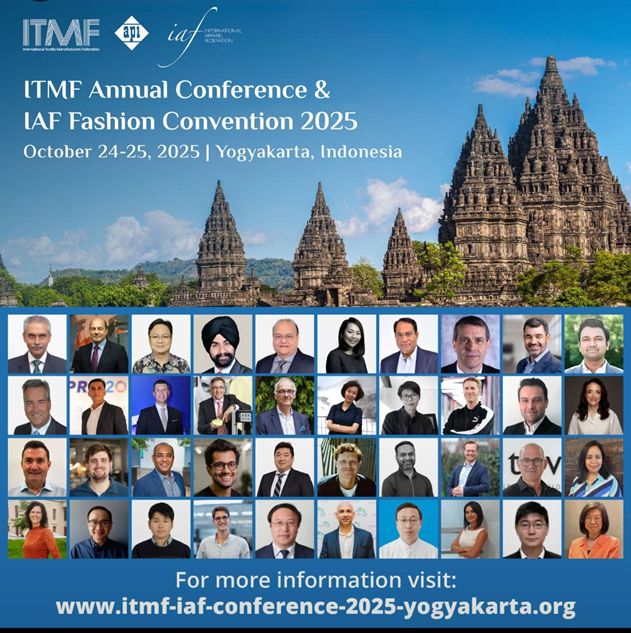
This year, the ITMF Annual Conference & Annual Convention will be held from October 24-25, 2025 at Yogyakarta.
Co-hosted by the International Textile Manufacturers Federation (ITMF) and the International Apparel Federation (IAF), this edition will be the 40th IAF World Fashion Convention and will bring together chief executives, industry experts, decision-makers, and innovators from across the entire global value chain. The Indonesian Textile Industry Association (API) will serve as the host association.
A crucial forum
Under the comprehensive theme, ‘Navigating Uncertainty & Adopting Technology – Pathways to Sustainable Strength in the Textile & Apparel Industry,’ the two-day conference will serve as a crucial forum for addressing the industry's most pressing challenges and opportunities.
Leaders from both the textile manufacturing (ITMF) and apparel/fashion (IAF) sectors will emphasize the need for industry-wide collaboration to build stronger, smarter, and more sustainable supply chains in a period of unprecedented global change. The joint convention aims to foster a deeper understanding across the value chain, which is essential for competitiveness.
Cutting-edge insights
The program is set to deliver cutting-edge insights through a series of dynamic sessions, including showcase of the potential and dynamics of one of ASEAN's largest economies and a major global production hub, discussions on compliance, global trade uncertainties, and evolving legislative landscapes, a deep dive into transformative technologies, including sessions on reducing audit fatigue and the latest progress in the sector, exploring the role and applications of Artificial Intelligence across the manufacturing, supply chain, and design processes, addressing the industry's critical path toward achieving net-zero emissions, including new initiatives like the manufacturer-led Apparel & Textile Transformation Initiative (ATTI) and a focused discussion on global trends in both cotton and man-made fibers.
The event will feature the presentation of the ITMF Start-up Awards, the ITMF International Collaboration Awards, and the ITMF Sustainability & Innovation Awards, recognizing pioneering global efforts.
The United States Fashion Industry Association (USFIA) will host the 37th Annual Apparel Importers Trade & Transportation Conference on November 5, 2025, at the Fashion Institute of Technology (FIT) in New York City. The event is co-hosted with FIT’s Jay and Patty Baker School of Business and Technology, International Trade and Marketing Department.
This flagship conference brings together fashion industry professionals from across the supply chain - including sourcing, trade compliance, logistics, marketing, and sustainability - for a full day of insights, networking, and strategic discussion.
According to Julia K Hughes, President, USFIA, this conference is a critical opportunity for industry leaders to stay informed and connected. Leading experts will express their views on tariffs, sourcing diversification, compliance challenges, and opportunities for circularity and sustainability in the supply chain.
Featured sessions will cover Sourcing Outlook and Trends for 2026, Tariffs and Trade: What’s on the Horizon for Brands and Retailers, Traceability and Tariff Compliance Strategies for Brands and Retailers, Circularity and Fashion Innovation, and Industry Insights on Made in USA and the Global Outlook
Premiere Vision is strategically changing its approach to highlight French savoir-faire (know-how) at its main fashion industry trade shows, effective in 2026.
The organization is evolving its Made in France PV show by integrating its offerings into two major events: Première Vision Paris and Blossom Première Vision.
This move is part of Première Vision’s commitment to align with market changes, aiming to boost the clarity, coherence, and synergy of its events. The goal is to better serve brands, manufacturers, and regional businesses while showcasing French craftsmanship on a larger, more impactful national and international stage.
The integration will strategically reposition the ‘Made in France’ content. The event will feature a dedicated showcase and new curated content to elevate the visibility of French craftsmanship. This is intended to enrich the visitor experience and strengthen the connection between local production, creativity, and innovation.
The Blossom Première Vision show will now include premium garment manufacturers, creating new links between exceptional materials and high-end fashion production.
This new, consolidated format is designed to offer French companies significant advantages including increased visibility, access to a broader, more diverse visitor base, new synergies between various market segments
Florence Rousson, Chair of the Executive Board of Première Vision, commented that this evolution gives ‘new momentum’ to the Made in France initiative by strengthening its business, inspirational, and strategic dimensions. She stated that the decision reflects the company's ambition to put French know-how at the center of the Première Vision experience, building a platform that remains true to its DNA as a global hub for creative, sustainable, and competitive fashion.
From €6.44 billion in the prior year quarter, currency-neutral revenues of the brand adidas increased by 16 per cent to €6.63 billion in Q3, FY25.
The company’s gross margin edged up to 51.8 per cent during the quarter from 51.3 per cent in the corresponding quarter last year, overcoming headwinds from unfavorable currency shifts and higher tariffs. Its operating profit rose to €736 million compared to €598 million in 2024.
Based on this better-than-expected performance, adidas is significantly boosting its full-year guidance for 2025.
The company expects currency-neutral revenues for the core adidas to grow by double-digits during the year. However, including the prior-year Yeezy sales, total currency-neutral revenues are projected to increase by around 9 per cent, a slight improvement from the previous ‘high-single-digit rate’ forecast.
adidas’ operating profit for the full year is now expected to reach around €2.0 billion, as against the earlier projected guidance of between €1.7 billion and €1.8 billion. This improved outlook is credited to sustained brand momentum, the strong business execution, and successful efforts to offset increased US tariff costs.
Highlighting the company’s strong growth, Bjorn Guilden, CEO, expressed a positive outlook toward 2026, which is lined up to be a major sports year. adidas will release its full financial report on October 29.
A new analysis by Crisil Ratings indicates, the recent Goods and Services Tax (GST) changes will significantly impact India’s organized apparel retail sector this fiscal year. The tax rationalization is expected to add roughly 200 basis points (bps) to revenue growth, keeping the sector's expansion steady at 13–14 per cent for the second straight year. Crisil's study covered 40 organized apparel retailers, which account for nearly one-third of the sector's total revenue.
The government's GST revision created a dual effect. The uniform 5 per cent GST rate was extended to apparel priced up to Rs 2,500. This widening of the lab is set to spur demand in the price-sensitive fast-fashion and mid-premium categories, especially during the festive season.
Conversely, the GST rate on apparel priced above Rs 2,500 was increased from 12 per cent to 18 per cent. This hike impacts the premium category, which includes wedding wear, woolens, and embroidered clothing, and makes up about 35 per cent of organized sales.
Anuj Sethi, Senior Director, Crisil Ratings, notes, the timing of the rate cut - coinciding with the festive season - is expected to stimulate middle-class spending. This, combined with easing inflation and shorter fashion cycles, will give retailers a modest advantage in discretionary spending.
However, the higher GST on premium apparel could dampen demand, particularly for items priced in the Rs 2,500 to Rs 3,500 ($28 to $40) range, potentially causing some consumers to trade down. Poonam Upadhyay, Director, Crisil Ratings, suggests, retailers with a larger share of premium products may choose to absorb part of the GST hike to sustain festive and wedding season demand.
Retailers are expected to benefit from lower input costs, as the GST on cotton and synthetic fibers/yarn has been reduced to a uniform 5 per cent. Since raw materials constitute nearly two-thirds of production costs, the sector’s operating margin is projected to slightly improve from 14 per cent last year to 14 per cent–14.5 per cen this fiscal year.
Overall, the GST changes reflect shifting consumption patterns driven by a growing middle class and a preference for affordable, fashion-forward clothing, though any resurgence in inflation could pose a challenge.

